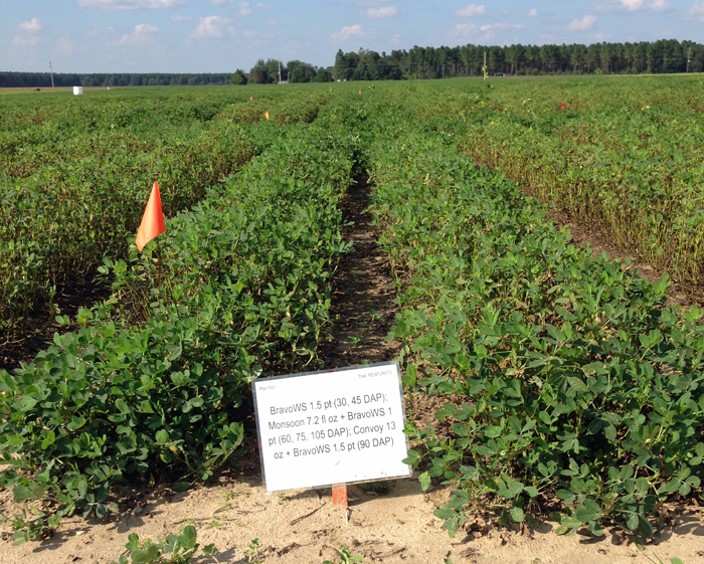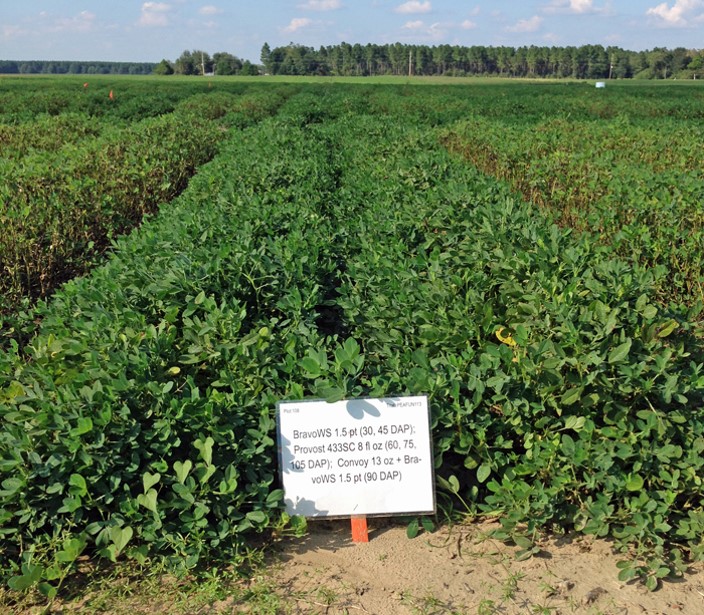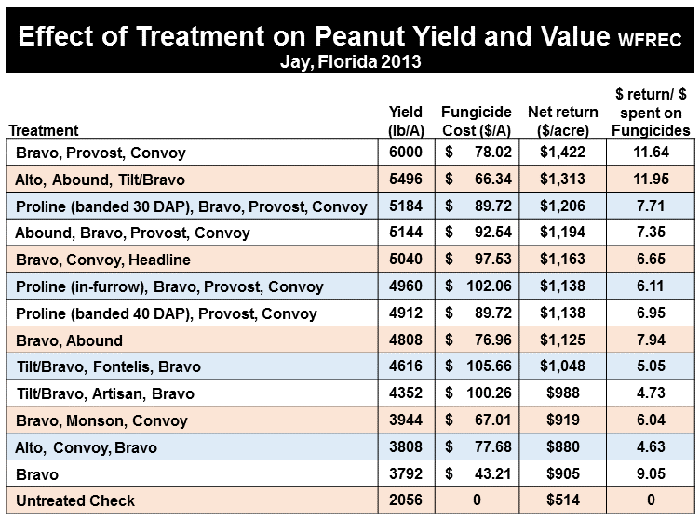The 2014 Panhandle peanut crop is developing at a normal pace. Soilborne disease control programs have begun, mainly targeting white mold. Some fields are also being treated for foliage feeding caterpillars.
As peanut farmers progress further into their white mold management program, they need to take a serious look at the fungicide options that producers have at their disposal. The least expensive is not always the best option. When it comes to generic tebuconazole, it is cheap and it does have a role in our fungicide programs; to quote Bob Kemerait, UGA Pathologist, “we don’t need to forget who brought us to the dance.”
There are more expensive options available, however, and based on one years data from the University of Florida IFAS Extension, Santa Rosa County 2013 Fungicide Trial, producers that spent more money on fungicide programs made more money in net return per acre. The photos above and below visually show the difference in white mold suppression, that resulted in true yield differences at harvest in 2013.
Listed below are the fungicide programs tested at the West Florida Research and Education Center in 2013, ranked based on both yield and net return per acre.
A serious disease that has not been not seen much in the past 5-6 years has started showing up again in recent weeks. Many fields in Santa Rosa County are developing early to mid-season symptoms of Tomato Spotted Wilt Virus (TSWV). Variety selection and planting date are the only management options for this disease. Once disease symptoms start showing up in a field, there is nothing that can be done to manage it.
For more information on TSWV and the 2013 Evaluation of In-Furrow and Foliar Fungicides, please see the following UF/IFAS publications:
- 54th Annual Santa Rosa County Farm Tour Goes Virtual - December 11, 2020
- Video Tour of the 2020 Santa Rosa County Peanut Variety Trial - October 9, 2020
- Giant Salvinia – A Highly Invasive Aquatic Plant You Don’t Want Growing in Your Pond - May 29, 2020



